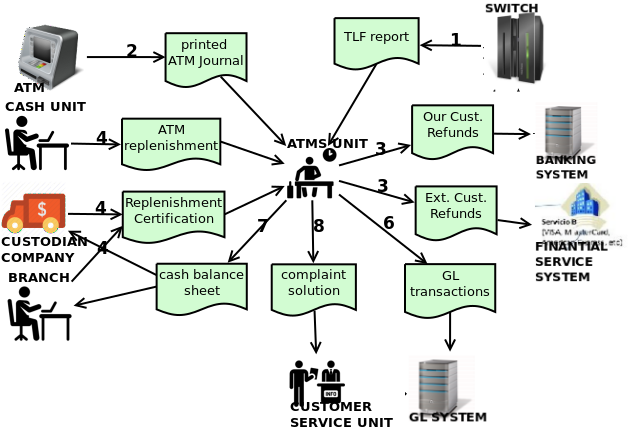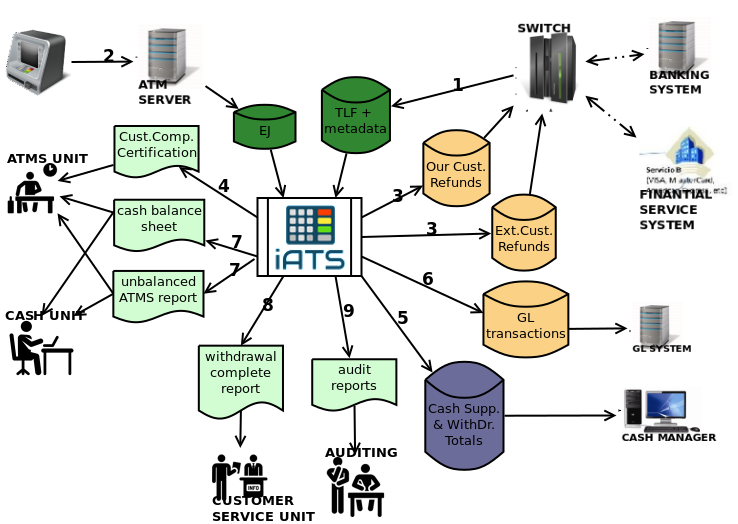Your post-operation process could be fall in any of these situations listed as follow: less integrated operation, customer complaints is not solved in a short time, and finally, the business process works with high fixed costs.
This process occurs after the system operation that allows transactions in each ATM and the system is cutoff. One has to collect all sources of information, generally paper-printed give to the staff personnel charged to perform these tasks, in order to find out inconsistencies and restore the whole system state, and the majority of the financial institucions who has an ATM network, this process is enterally manual.

The main task for these staff is producing a position report for each ATM, but sometimes, information is not available at once. The worse case is when a customer presents a complaint a lot of time after and the supporting information is not available.

The iATS © tool consists of the batch and online processes. The main reason why your financial institution must install iATS tool is the automated batch computer processes such as TLF processing, EJ processing, totals generation, and finally refunds and GL-records generation.
The whole process could be showed on this simplified diagram,

Some user intervention is necessary in order to adjust information values, set new configurations etc. We are going to explain some batch processes. At the beginning of post-operation process,
- The first process is TLF processing. One uses the stream text file with a specific format accepted by iATS tool, which is generated by the switch system like TANDEM-Base24, ON/2 Shared Financial, OASIS etc. This file includes financial transactions like withdrawals, deposits, balance enquiries. Once is uploaded, reversal checking and ATM totals are done.
- The second is EJ processing. Depending on the ATM software like KAL, Commander etc, one extracts the information that we includes Cash Supplies records like replenishments, cutoffs, physical cash dispensed, after that transactions with ATM final status. We expected that the limits for each transaction date time of this stream file is the same of the TLF. Once one has realized this verification, one can do the reconciliation among the TLF and the EJ records in order to produce the refund records, cutoff gaps etc.
In the middle, the staff can view different forms and reports aimed to see the status of whole system (see suggested work design under iATS).
In particular, the cash position report for each ATM cutoff cycle (see ATM cash position report), and the detailed refunds list found during TLF vs EJ reconcilation. If there were suspect refunds, the staff must be update the refund value according to the notes found at PURGE CASSETTE.
We expect that the cash position shows that incomes amt. and outcomes amt are equal. If it is not the case, one has to use the cash shortage/overages entry forms as a last resort.
At the last, once one has performed the necessary manual interventions, other batch processes are run: Refunds Generation, GL records Generation and Cash Manager records Generation.
GL records generation is consider as the post-operation process cutoff for every day.
After that, each stream file is sent to each proper destiny, refunds to switch, GL records to accounting system converted into GL transactions according to accounting needs, and the cash manager records to the Cash Manager Tool chosen by the planning unit.
